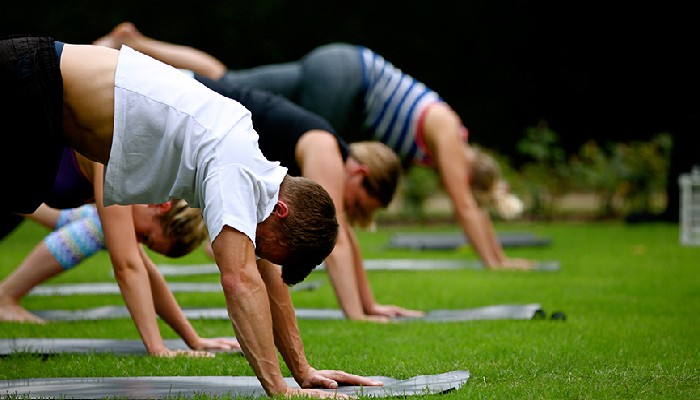
A range of motion
The dictionary defines ‘function’ as an activity that is natural to or the purpose of a person or thing. So ‘functional’ should then mean something that is designed to be useful and practical for the individual.
The litmus test and success of any venture or action depends on how well it delivers on the functionality meter. So it is with health and fitness solutions. Movement is a prime function of humans and we are eventually a function of how well we move and perform in life. ‘Functional training’ has been the buzz phrasefor some time now. Given its rampant usage, one would expect it to be self explanatory, with people being able to determine what it means for them and then pursue it. Reality reveals a different picture, however.
Functional Training needs to be treated as a concept rather than a definition. To decide its relevance and structure in your life, you need to go back to basics. What is your lifestyle and what movements do you perform on a regular basis as part of your day-to-day existence? Are you able to perform some actions better than others? Do you feel limited while performing other actions that might be equally necessary? Do you feel that you are training or performing regularly and yet your performance is not improving? Everybody has different physical demands so whatever health and fitness solutions you seek should, at the very basic level, deliver to strengthen and enable you to perform your chosen movements more efficiently, powerfully and gracefully.

To be truly functional, any health and fitness programme needs to address a body’s strength, power, agility, balance, flexibility, speed, cardiovascular or muscular endurance and body composition. For example, a runner or cyclist does not need just speed and cardiovascular strength. He or she needs flexibility and muscular strength too. Lack of these results in an increased injury rate. A lifter’s primary need may be for power and strength but if flexibility and balance are ignored (as is often the case) it is a recipe for body rigidity and excessive muscle wear and tear. The more intense or explosive the movement, the more important is the integration. We may not realise it but our daily activities are multi-planar and a combination of push, pull, twist, bend, squat, climb, walk, run, depending on what we may be actively pursuing. Even daily household chores require a variety of movements. Therefore, our body needs to be really fit .
Lack of strength prevents us from holding relatively heavy objects or moving them around. Loss of flexibility makes our joints stiff and causes pain and limitation of movement as we age. Diminished cardiovascular capacity makes us pant and escalates our heart rate at the merest exertion. Compromised balance, especially as a corollary of the natural ageing process, is a primary cause of falls and fractures. Body composition is a very vital element of our health. A healthy and fit body needs to have all its fitness parameters within range, not just to look good but also to prevent diseases.
When all elements are developed in unison, we get the bonus of grace. Grace is about control; it is about the body performing through a range of movements seamlessly. Speed and strength need to balance each other just like cardiovascular and muscular strength. Without balance, we are like loose cannon balls, often struggling awkwardly to complete a movement. A fluid movement is a product of a body that has developed its potential well and is focussed on strengthening all aspects equally.
The reason why most people are plagued by chronic aches, pains and illnesses on the one hand, and athletic performance falls short on the other, is the lack of adequate functional movement and training respectively. Most labourers working at construction site have a lean, muscular look despite the sun, bricks and outdoors being their harsh gym. In contrast, sometimes bulked biceps developed in air conditioned gyms come packaged with a paunch and lack of ability to bend or go far and fast. What’s the difference? It’s about putting the body through its paces in all dimensions, and keeping it working on all planes equally!
A good coach or trainer will, after taking into account your objectives, assess your current state and accordingly design a safe, scientific and effective programme that will be scalable and build your capacity to perform. It will also greatly reduce excessive loading and the resultant injuries thanks to overuse. The whole concept of functional fitness can be fun since it involves utilising different forms or disciplines of health and exercise. It gives you the liberty of aspiring for different goals knowing that your plan can be restructured to get you there. The body is capable of a lot. Adopt a functional approach and be delighted by what all you can achieve.
http://m.thehindu.com/features/magazine/vani-pahwa-on-functional-fitness/article8227561.ece

Leave a Comment